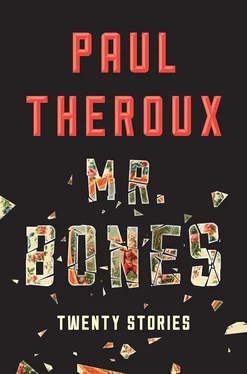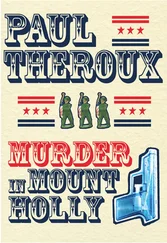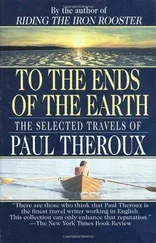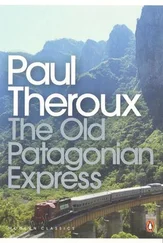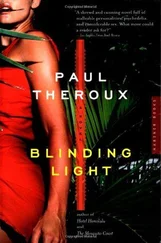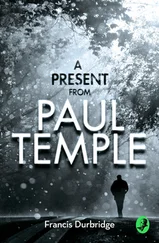She said, “I’ve missed you boys so much.”
We told her we’d missed her too, but in a low voice so that Pa wouldn’t hear.
“I’ve got a job now. I do counseling. I have a full caseload.” She shoved her cuff back from her wrist and looked at her watch. “I’ll have to leave pretty soon.”
Sam said, “Can we come with you?”
She saw that I had the same question on my face. She didn’t say anything. She looked up at Pa, who was standing like a sentry with his hands behind his back.
“Take them.” His eyes were weirdly lit, and he was pale and spiky-haired from sleeping all day. “What good are they here? They think it’s all a joke. They don’t realize how much is at stake.” He turned away. “I’ve got my hands full.”
Without another word, he crossed the lawn and headed back to the house, leaving the lights off, as he did these evenings, so that he was better able to see the animals. When I looked back, I saw him staring with yellow eyes at Ma leading us away from him.
ALTHOUGH I WAS not prepared for it — but how could anyone be? — Mrs. Everest introduced me to the work of the artist Felix Gonzales-Torres, specifically a piece composed of about nine dollars’ worth of light fixtures: two bulbs on extension cords twisted together, hung against a bare wall, and plugged into a socket at the baseboard. I expected her to say, “It’s supposed to make you angry.” But Mrs. Everest called it an eloquent depiction of grief.
“As an artist yourself, you can appreciate the depth of meaning here.”
I said, “This means absolutely nothing to me”—the wrong answer, because she then told me that she was negotiating to exhibit this genius’s work at her gallery, and I’d been hoping that she’d show my work too.
Instead of changing the subject, she reminded me of how little I knew by describing another of his works, this one consisting of 175 pounds of wrapped candy heaped against a wall. When I smiled, trying to imagine this, she said, as though to a child, “It represents his friend Ross, who died. That’s how much he weighed. Gallerygoers eat the candy and make him thinner. See?”
And the extension cords, Untitled (March 5th) #2, one of a series, was said to depict the two men, Gonzales-Torres and his lover, entwined. Mrs. Everest showed me the catalogue entry from a museum where the installation was on view.
The work is open to a wide range of interpretations — naked and vulnerable, or poignant and warm. The implicit romanticism of the work’s metaphor of two luminous bodies, tempered by the knowledge that at any second one of the bulbs could burn out, with the other left to shine on alone.
“When I think of luminous bodies, Andy Wyeth’s Helga paintings come to mind.”
I dared say this because many of my paintings have been compared to those of Andy, who was my friend.
Pretending to be deaf is a conventional form of passive aggression — Mrs. Everest claimed she could not hear any of my comments, squinted when I repeated them, and instead of answering merely shrugged, implying that they were too banal to address. In what I realized later was her belittling my work, she talked in her odd chewing way about an upcoming show at her gallery, praised — overpraised — the artist, a man who collected and exhibited used footwear, mainly the shoes of industrial workers.
This is perhaps the place to say that the art she promoted always needed an explanation: you had to be educated in the circumstances of the artist’s life, the jobs, the peculiarities, the miseries. You felt no solitary aesthetic satisfaction in her gallery; instead you were possessed by a faint dizziness of bewilderment. J.M.W. Turner’s long, eccentric life is unknown to the average museumgoer, yet none of Mrs. Everest’s artists could be appreciated until an immense amount of biographical information was supplied as context, something Mrs. Everest was eager to offer, as in, “His lover weighed 175 pounds.” People gathered around the works, discussing the minutiae of the artist’s life.
My paintings were praised for their impartial realism, but not by Mrs. Everest, who regarded my portraits and landscapes as so self-explanatory as to be banal, the instant gratification of the human face or a cluttered room. My life was not public, my wife’s weight was her secret. I often painted portraits, but my self-portraits I kept to myself. Every picture I’ve done has a history, but I intended each one as complete in itself. Why would you need to know more?
She smiled at the idea that I was still using a paintbrush, and I suspected she believed that my work lacked depth. She could be severe with people she disapproved of. “I have a mental list of people I want to kill,” Mrs. Everest used to say, and her gargling old-actress voice made her sound more murderous. “Not die a natural death — I want to deal the fatal blow.” She would then name the wished-for victims: a talk-show host, a celebrity humanitarian, a new neighbor, an art dealer — one of her competitors, usually a woman. “Quite a long list. I keep adding to it.”
We always encouraged her with our laughter. Isabel and I were among her best friends. In the beginning we thought it was a joke, and later it became too awkward to say anything.
“I’m putting him on my list,” she’d say at a party, and friends like us always knew what she meant.
We were summer people on the island. When our house was finished and we moved from the mainland, someone said, “Mrs. Everest wants to meet you.” The implication was that I was lucky she was taking an interest. She was prominent on the island, where she spent the season in a house built by one of her ex-husbands—“the third or fourth,” people said. I was told that she thought highly of my work. “Thought highly” was intended as a kind of catnip. Mrs. Everest was a well-known collector, and art dealer. I had never met her. Though I had been successful in my work, I was on the periphery. Her gallery was busy, the openings always packed with people. Until then I had not been exhibited in her gallery nor invited to any parties.
I knew she dealt in whatever was in vogue in New York City, installations, giant photographs, acrylic artifacts, rusted hubcaps, even color-coded condoms arranged in menacing mandalas. All of this was a far cry from my monoprint etchings and the portraits of, for example, the people who had worked on my house — the carpenters, electrician, plumber, roofers, plasterers — my Workmen series. No one mentioned these pieces; they talked about Mrs. Everest.
Whispers tend to enlarge the unmet person. She was one of those people who was preceded by an enthusiastic prologue of buildup, someone whom everyone spoke about and quoted — quotes always delivered with force, but so unmemorable you suspect the enthusiast to be somehow in thrall to the person. “You mean you haven’t met her yet?” And then you meet the person and she never quite matches the talk, but you find so much else that no one mentioned, perhaps didn’t notice, and you wonder why, because it doesn’t seem like the same person at all.
In the case of Mrs. Everest, the quotes were slight but always repeated with gusto, usually how she had been sharp with someone, teased them or dispatched them with a word, the rudeness repeated with a shiver of approval. “She has a list of people she wants to kill.” I smiled and said I couldn’t wait to meet her, but I was also thinking, I don’t get it.
Then the party came — the Callanders, her friends, a room full of people, a table of food, waiters offering filled wine glasses from trays. A lull in the conversation and glances at the entryway meant that she had arrived. She was greeted by Biff Callander and his wife, Lara. She took a glass of champagne, but didn’t drink — it was an accessory — and she was shown my way.
Читать дальше
